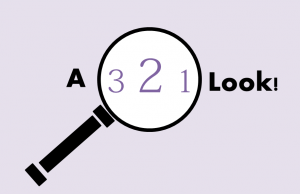This 3-2-1 will examine the “Father Time” sculpture, which is located in the center room of the fourth floor in the YCBA. The sculpture was crafted out of Coade stone (a particularly durable material) around 1790 by an unknown artist.
3 important observations about this sculpture:
- Father time is holding a scythe and an hourglass, but he holds them rather clumsily. The hourglass and scythe are typical symbols in father time depictions, and together they represent the unstoppable forward movement of time. In this sculpture father time balances the hourglass in his left hand, and hides the head of the scythe below his seat.
- Father time’s body is detailed, muscled, and manly. In most depictions, father time wears a long robe, but here the fabric has fallen off his shoulders and hangs around his waist. The muscles in his arms and even the vanes in his fingers are sculpted with incredible detail.
- Father time sits on a stone. Usually, father time is imagined in a strong standing position. Here, he is crouched in a seated position. His body weight hangs on the shaft of his scythe.
2 major takeaways from this sculpture:
- Father time is disheartened. His seated position shows that he is exhausted, and his weak grip on the scythe and hourglass show that he is not very connected with his own symbols.
- Father time is a human, not a mythical creature. Even though he has wings, father time has rippling muscles, and mannish features. The details of his body tell us that he struggles in the same way all mortals do. This, in the context of his rather hopeless demeanor makes us wonder what role time played in humans’ lives. Does time rule humans or do humans rule time?
1 activity to engage students:
- Body Language Tableau: In this activity, students will analyze father time’s emotions by examining his body language.
- Materials: None!
- Instructions:
- First, engage in a brief discussion with students on their observations, specifically focusing on the symbolism of the scythe and hourglass.
- Then, have students imitate father time themselves by replicating his posture and body language.
- Next, while holding their positions, ask students to show the facial expression best fitting father time in this sculpture.
- Lastly, tell students to relax their position, and have them discuss in pairs and then as a whole group what facial expression they believe best suits father time.
- Discussion Questions: How can we tell that father time is unhappy? Why might father time be unhappy? Is time controllable or uncontrollable? How does time help us understand lives? Depending on age, choose to connect this to the history of the late 18th century: i.e. what does this sculpture tell us about how people (the sculptor and his audience) viewed the passage of time in the late 18th century
- First, engage in a brief discussion with students on their observations, specifically focusing on the symbolism of the scythe and hourglass.
- Then, have students imitate father time themselves by replicating his posture and body language.
- Next, while holding their positions, ask students to show the facial expression best fitting father time in this sculpture.
- Lastly, tell students to relax their position, and have them discuss in pairs and then as a whole group what facial expression they believe best suits father time.

